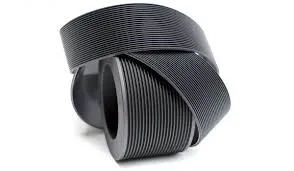- Arabic
- French
- Russian
- Spanish
- Portuguese
- Turkish
- Armenian
- English
- Albanian
- Amharic
- Azerbaijani
- Basque
- Belarusian
- Bengali
- Bosnian
- Bulgarian
- Catalan
- Cebuano
- Corsican
- Croatian
- Czech
- Danish
- Dutch
- Afrikaans
- Esperanto
- Estonian
- Finnish
- Frisian
- Galician
- Georgian
- German
- Greek
- Gujarati
- Haitian Creole
- hausa
- hawaiian
- Hebrew
- Hindi
- Miao
- Hungarian
- Icelandic
- igbo
- Indonesian
- irish
- Italian
- Japanese
- Javanese
- Kannada
- kazakh
- Khmer
- Rwandese
- Korean
- Kurdish
- Kyrgyz
- Lao
- Latin
- Latvian
- Lithuanian
- Luxembourgish
- Macedonian
- Malgashi
- Malay
- Malayalam
- Maltese
- Maori
- Marathi
- Mongolian
- Myanmar
- Nepali
- Norwegian
- Norwegian
- Occitan
- Pashto
- Persian
- Polish
- Punjabi
- Romanian
- Samoan
- Scottish Gaelic
- Serbian
- Sesotho
- Shona
- Sindhi
- Sinhala
- Slovak
- Slovenian
- Somali
- Sundanese
- Swahili
- Swedish
- Tagalog
- Tajik
- Tamil
- Tatar
- Telugu
- Thai
- Turkmen
- Ukrainian
- Urdu
- Uighur
- Uzbek
- Vietnamese
- Welsh
- Bantu
- Yiddish
- Yoruba
- Zulu
វិច្ឆិកា . 09, 2024 00:41 Back to list
Understanding the Benefits and Applications of Rubber Drive Belts in Various Industries
Understanding Rubber Drive Belts Types, Applications, and Benefits
Rubber drive belts are essential components across various industries, serving as crucial links in mechanical systems. These flexible loops made of rubber transmit power between rotating shafts, facilitating the smooth functioning of machines and engines. From automotive applications to industrial machinery, rubber drive belts play a fundamental role in enhancing efficiency and reliability.
Types of Rubber Drive Belts
There are several types of rubber drive belts, each designed to meet specific needs and requirements
1. V-Belts The most common type of drive belt, V-belts feature a trapezoidal cross-section. Their design allows them to fit snugly into pulleys, enabling effective power transmission. They are widely used in automotive engines and various industrial applications due to their ability to handle high loads and operate at high speeds.
2. Flat Belts Flat belts have a rectangular cross-section and are typically used in applications where multiple driven shafts are aligned in parallel. They are capable of transmitting power over long distances, making them ideal for conveyor systems and machinery in factories.
3. Timing Belts These belts feature teeth that mesh with pulleys, ensuring accurate synchronization between the driving and driven components. Timing belts are commonly found in automotive engines, where precise timing of the crankshaft and camshaft is essential for optimal performance.
4. Poly-V Belts Also known as serpentine belts, poly-V belts have multiple ribs on their surface, allowing them to provide a larger contact area with the pulleys. They are used in applications where space is limited, offering flexibility and improved efficiency in power transmission.
Applications of Rubber Drive Belts
Rubber drive belts are used in a myriad of applications across various sectors
- Automotive Industry Rubber belts are integral to vehicles, connecting components in the engine and accessory systems. They drive alternators, water pumps, and air conditioning compressors, contributing to the vehicle's overall functionality.
- Manufacturing In factories, rubber drive belts are employed in machinery for material handling, processing, and assembly. They power conveyor belts, mixers, and various automated systems, ensuring that manufacturing processes run smoothly.
rubber drive belts

- Agriculture In agricultural equipment, rubber drive belts are vital for grain harvesters, tractors, and other machinery. They help transmit power from the engine to various components, improving the efficiency of agricultural operations.
- HVAC Systems Rubber drive belts are used in heating, ventilation, and air conditioning systems to drive fans and compressors. Their robustness and reliability are crucial for maintaining optimal environmental conditions in buildings.
Benefits of Rubber Drive Belts
The use of rubber drive belts offers numerous advantages, including
1. Flexibility and Adaptability Rubber belts can easily adapt to variable speeds and loads, making them suitable for a wide range of applications.
2. Reduced Noise Levels Rubber drive belts are typically quieter than metal alternatives, contributing to a more pleasant working environment.
3. Vibration Dampening The inherent elasticity of rubber helps absorb shocks and vibrations, protecting machinery and extending component life.
4. Cost-Effectiveness Rubber drive belts are generally less expensive than other mechanical drive systems. Their durability ensures a longer service life, resulting in lower maintenance and replacement costs.
5. Easy Installation and Replacement Rubber belts are relatively easy to install and replace, minimizing downtime in production environments.
Conclusion
Rubber drive belts are indispensable components in various industries, enhancing the efficiency, reliability, and functionality of machines and equipment. Their diverse types and numerous applications underscore their importance in modern engineering. As technology evolves, we can expect advancements in rubber belt designs that will further improve performance, efficiency, and sustainability. Understanding the significance of rubber drive belts can help industries optimize their operations, contributing to a more effective and productive future.
-
Korean Auto Parts Timing Belt 24312-37500 For Hyundai/Kia
NewsMar.07,2025
-
7PK2300 90916-T2024 RIBBED BELT POLY V BELT PK BELT
NewsMar.07,2025
-
Chinese Auto Belt Factory 310-2M-22 For BMW/Mercedes-Benz
NewsMar.07,2025
-
Chinese Auto Belt Factory 310-2M-22 For BMW/Mercedes-Benz
NewsMar.07,2025
-
90916-02660 PK Belt 6PK1680 For Toyota
NewsMar.07,2025
-
drive belt serpentine belt
NewsMar.07,2025

